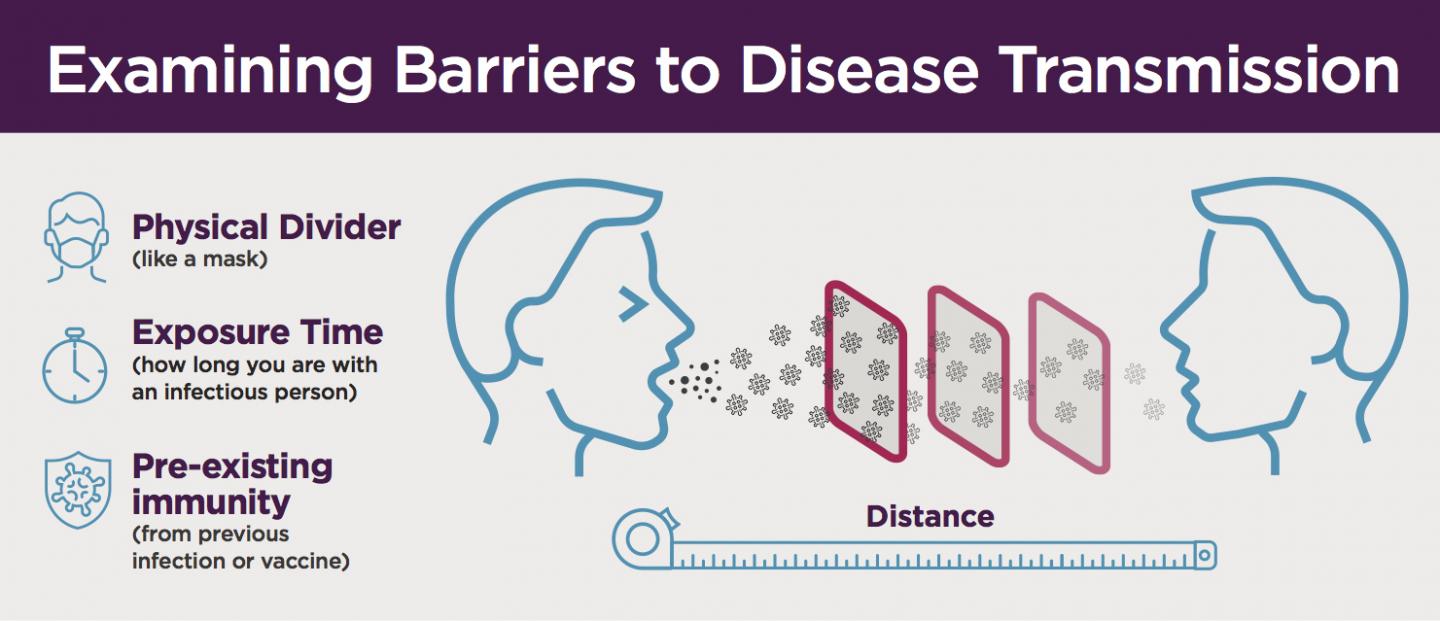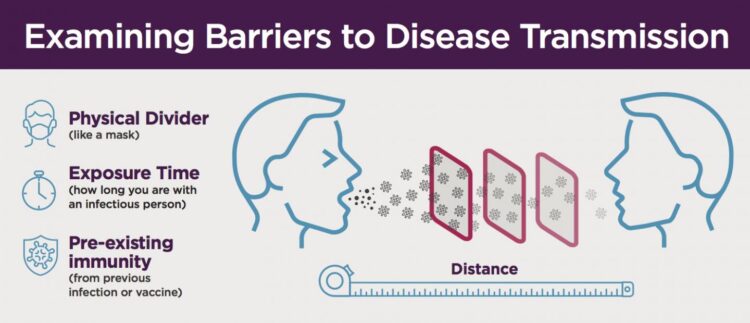
Credit: University of Pittsburgh Medical Center (UPMC), MEDIA518719 JAB/AH 1/21
Pre-existing immunity is an important barrier to airborne transmission of influenza viruses and can influence the emergence and spread of potentially pandemic viruses, according to a study published February 18 in the open-access journal PLOS Pathogens by Seema Lakdawala of the University of Pittsburgh School of Medicine, and colleagues.
Influenza viruses pose a major public health threat through both seasonal epidemics and sporadic pandemics. Every influenza season is different, with one virus subtype (H3N2 or H1N1) typically dominating. In the 2017-2018 H3N2 influenza season, 40% of the cases were in the elderly, in contrast to the 2009 H1N1 pandemic, in which the highest burden of infection was found in individuals 5-24 years of age. This age-based discrepancy suggests that pre-existing immunity could impact susceptibility to infection, since people of different age groups are exposed to different strains in early childhood. But the precise role of immunity from previous infections on susceptibility to airborne infection has been unclear. This is an important question to answer because airborne transmission is critical for the emergence of pandemic viruses such as H1N1 and SARS-CoV-2, which is responsible for COVID-19.
Using the ferret model, Lakdawala and colleagues examined the roles of exposure duration and immunity on influenza transmission. The results showed that a 48-hour exposure is sufficient for efficient transmission of H1N1 and H3N2 viruses. Moreover, pre-existing immunity against the 2009 H1N1 pandemic virus protected animals from airborne transmission of a seasonal H3N2 influenza virus. This protection did not depend on cross-neutralizing antibodies, so understanding the underlying immunological mechanism will require further studies. According to the authors, the findings may have important implications for the current COVID-19 pandemic.
The authors add, “Prior immunity to influenza viruses can provide a barrier to airborne transmission of seasonal viruses. This may help to explain the heterogeneity in seasonal influenza transmission and susceptibility of different aged populations to circulating strains.”
###
Peer-reviewed; Experimental study; Animals
In your coverage please use this URL to provide access to the freely available article in PLOS Pathogens: http://journals.
Citation: Le Sage V, Jones JE, Kormuth KA, Fitzsimmons WJ, Nturibi E, Padovani GH, et al. (2021) Pre-existing heterosubtypic immunity provides a barrier to airborne transmission of influenza viruses. PLoS Pathog 17(2): e1009273. https:/
Funding: This work was supported by the National Institute of Allergy and Infectious Diseases (CEIRS HHSN272201400007C, SSL; 1R01AI139063-01A1, SSL; 1R01AI113047, SEH; 1P01AI108686, SEH; CEIRS HHSN272201400005C, SEH). SSL receives additional funding from the American Lung Association (RG-575688) and Charles E. Kaufman Foundation (KA2018-98552) a supporting organization of the Pittsburgh Foundation. Additional funding for JEJ includes T32 AI049820 and the Catalyst Award from the University of Pittsburgh Center for Evolutionary Biology and Medicine. ASL is supported by Burroughs Wellcome Fund PATH award. The funders had no role in study design, data collection and analysis, decision to publish, or preparation of the manuscript.
Competing interests: The authors have declared that no competing interests exist.
Media Contact
PLOS Pathogens
[email protected]
Related Journal Article
http://dx.





